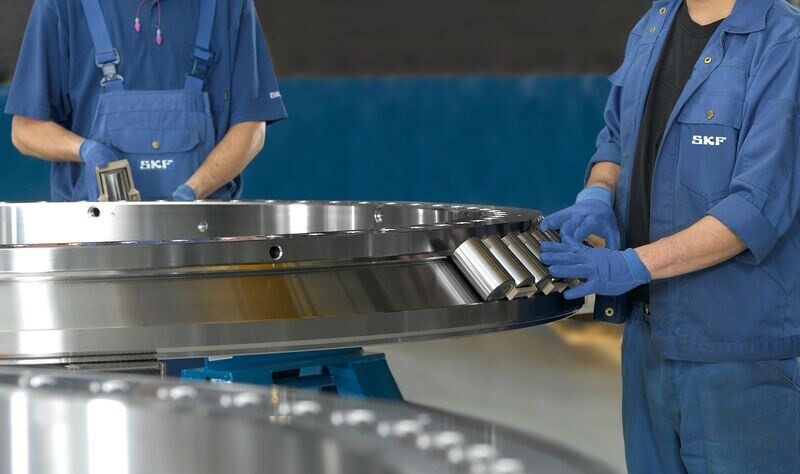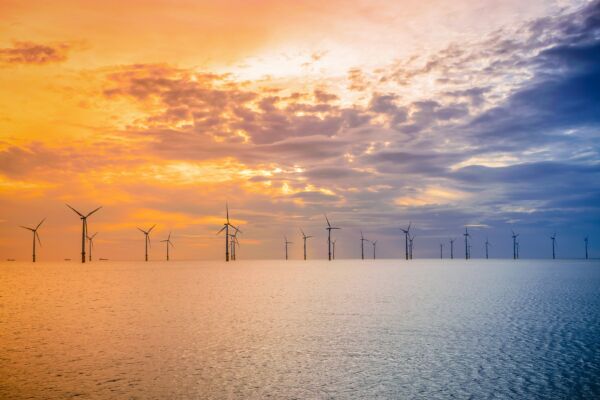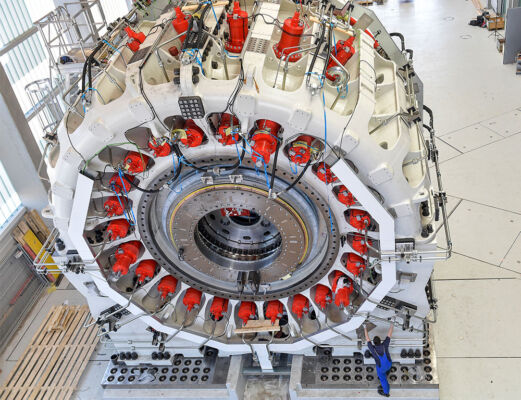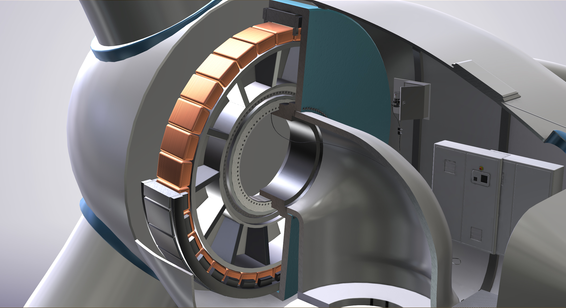Xinjiang Goldwind’s story is one of exponential growth and odds-defying success. The company was founded on the back of the Chinese State High-Tech Development Plan (or 863 Program) in the late 1980s, during an era of great technological progression and economic reform in the People’s Republic.
The only way is up
The approval of the 863 Program helped create funds for the then-state-owned Xinjiang Wind Energy, which were used to design and construct wind energy infrastructure in China – a first for the nation. That said, it wasn’t until Wu Yang – the company’s current Chairman who also oversaw the initial project – assembled Goldwind as Xinjiang Wind Energy’s predecessor in 1998, that the operation began to really take off.
Where does SKF come in?
The early 21st century brought several breakthroughs for the Chinese wind energy giant. Perhaps most notable was the purchase of gearless drive technology from German turbine manufacturer VENSYS in 2008. The idea behind the direct-drive system is that it operates without an elaborate gearbox, which can be prone to wear if not routinely checked and maintained. Removing all but one moving component can minimize the downtime associated with gearboxes. Not only that, but operators can reduce ownership costs, boost safety and efficiency, and – best of all – increase turbine availability and yield.
All that said, Goldwind’s innovative turbines rely heavily on a robust solution for the main bearing arrangement. Having signed a Strategic Partnership Agreement with SKF in 2006, Wu Gang was confident to award the Swedish ball and roller bearing manufacturer the contract – and the chosen solution was the plug-and-play, double-row tapered roller bearing SKF Nautilus. This is what he had to say on the partnership back in 2010:
During the past few years, we have had an excellent relationship with SKF that has provided us with world-class products and technical support. Added to this, SKF has also offered integrated R&D solutions that have proven further value for our wind turbines.
Collaboration knows no bounds
Flash forward to today and SKF and Goldwind’s partnership takes another turn in favor of the planet. The “wide-ranging, sustainably-focused collaboration” has now set the goal of lowering carbon emissions at SKF’s Chinese production facilities by increasing the use of green electricity with 18.23 GWh of renewable energy purchased to date in 2022.
Furthermore, a cloud-operated smart energy and carbon management system is now monitoring and analyzing emissions data at SKF’s Dalian factory. With the help of Goldwind, SKF can now enjoy transparency into energy consumption and identify opportunities for net-zero production with greater ease. Find out more on this here.
Goldwind: A history
- 1985: Following Chinese economic reform, Xinjiang Wind Energy is founded to explore the burgeoning potential of the wind energy market.
- 1989: China’s first wind farm, Dabancheng, opens following the receival of a Danish grant.
- 1998: Goldwind is founded by Wu Gang.
- 2006: SKF signs a Strategic Partnership Agreement with Goldwind.
- 2008: Goldwind enjoys “a new stage of rapid development” – introducing permanent magnet direct-drive (PMDD) technology and expanding in the global market.
- 2010: Goldwind acquires a low-interest loan of USD 6 billion from the government-owned China Development Bank as part of its expansion plan.
- 2011: Goldwind selects the SKF Nautilus bearing as the main bearing arrangement for its new 2.5 MW direct-drive turbine and places one of the largest orders to date.
- 2014: SKF is awarded the Technical Cooperation Award for its support and services to Goldwind.
- 2015: Goldwind becomes the largest turbine manufacturer in the world.
- 2020: The company totaled an annual revenue of RMB 50.42 billion and contributed towards 55.8 GW-worth of new installations in China.
- 2022: SKF and Goldwind collaborate to build smart energy and carbon management system in China.



